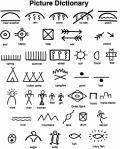Cleopatra VII may be the most famous woman in the ancient world. She was the last ruler of ancient Egypt’s Ptolemaic dynasty, which lasted for approximately 300 years, from the death of Alexander the Great to the rise of the Roman Empire.
Her face has become immortalized on various artifacts from the ancient world, including coins and several reliefs. Perhaps the most well-known depiction of her is the relief found in the Dendera Temple in Egypt, showing her alongside her son, Caesarion.
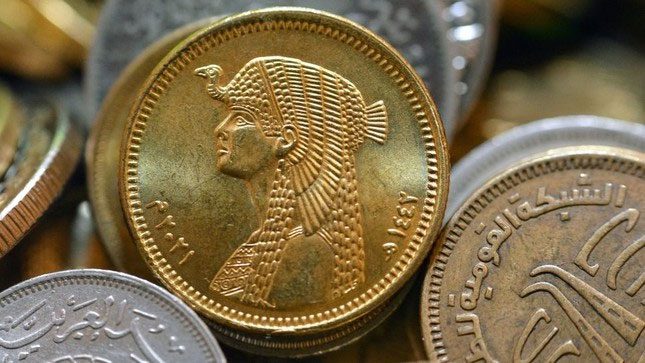
Cleopatra on the face of the 50 piastre coin of Egypt (2021 AD). (Photo: Tamer Soliman via Getty Images).
However, despite these ancient descriptions, we truly know very little about what the most powerful woman of the ancient world actually looked like.
Archaeological records do not leave us many clues, experts say. Her remains have never been found, and the descriptions made at that time may not accurately reflect her physical characteristics.
Cleopatra VII reigned from around 51-30 BC and was the last ruler of the Ptolemaic dynasty, which governed Egypt for nearly 300 years. When Julius Caesar arrived in Egypt, she had a son with him named Caesarion. Later, she had a romantic relationship with Mark Antony, resulting in the birth of three children. After Octavian’s forces conquered Egypt in 30 BC, she committed suicide.
The Controversy Over Queen Cleopatra’s Skin Color
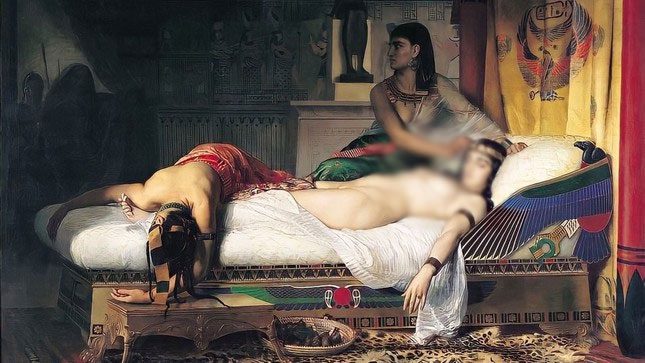
The painting titled “The Death of Cleopatra” (1874) by Jean-André Rixens. (Photo: Jean-André Rixens, via Wikimedia Commons).
There are several statues that may depict Cleopatra VII currently housed in museums scattered around the world. However, the origins of these statues are uncertain, and it’s unclear whether they genuinely represent Cleopatra VII.
Andrew Kenrick, a researcher at the University of East Anglia in the UK, also notes that ancient statues can be misleading. Kenrick states: “Sculptures and statues are projections of different aspects of a character rather than a true portrait.” For example, a sculpture might portray a ruler as more muscular than they actually were.
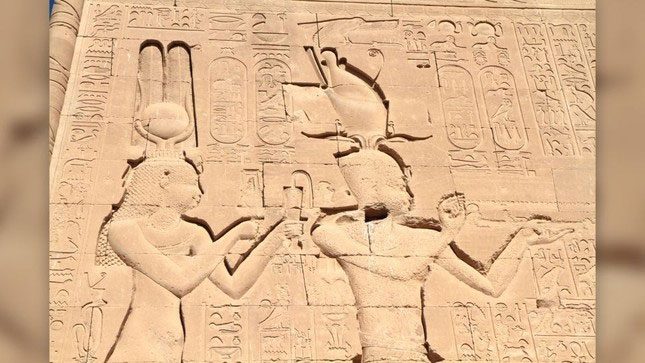
The massive relief depicting Cleopatra (Cleopatra VII) and her son Caesarion adorns the southern wall of the Hathor Temple, Dendera, Egypt. (Photo: TerryJLawrence via Getty Images).
Additionally, we do not know the identity of Cleopatra’s mother or grandmother, Kenrick points out, which suggests that “it is possible Cleopatra could have some African ancestry.”
Kenrick also adds: “We know Cleopatra’s father was Greek, and she would identify as Greek – although she described herself as Egyptian when it was politically advantageous.”
However, Zahi Hawass, former Egyptian Minister of Antiquities, believes her Greek heritage points to a clear conclusion: “Cleopatra was not a person of color.”
“As history clearly shows, she was a descendant of a Macedonian Greek general who was contemporary with Alexander the Great. Her first language was Greek, and in contemporary busts and portraits, she is clearly depicted as white,” Hawass writes.
Could Skeletons Reveal Cleopatra’s Skin Color?
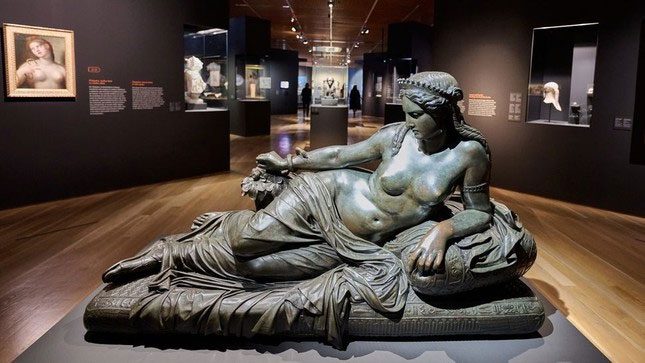
Statue of Cleopatra with an Asp snake displayed at the “Pharaoh’s Superstars” exhibition on November 24, 2022, in Lisbon, Portugal. (Photo by Horacio Villalobos/Corbis via Getty Images).
In 2009, the BBC aired a documentary titled “Cleopatra: Portrait of a Killer,” in which filmmakers spoke with researchers examining a skeleton found in 1926 in a tomb in modern-day Ephesus, Turkey. The researchers believe the bones belonged to Arsinoë IV, Cleopatra’s sister, who was murdered on Mark Antony’s orders in 41 BC.
Ancient records indicate that Cleopatra encouraged the killing, fearing that Arsinoë wanted to seize her throne.
Although the skull was lost during World War II, the research team reconstructed and analyzed it using old photographs and drawings, claiming to have identified skull features suggesting that Arsinoë IV’s mother was of African descent.
The researchers note that if Arsinoë IV is considered Cleopatra’s biological sister, it implies that the queen could have African ancestry.
However, Duane Roller, an emeritus professor at Ohio State University, states that Cleopatra and Arsinoë may not have had the same mother. The ancient writer Strabo (63 BC to 24 AD), who lived in Alexandria, wrote that Ptolemy XII, Cleopatra’s father, had children with multiple women.
Jane Draycott, a classicist at the University of Glasgow, UK, remarked: “The Romans did not consider themselves to be white-skinned but rather brown or olive-toned.”
“There should not be a conflation between speaking Greek and having white skin, as Greeks and Romans certainly did not see themselves as white,” Kenrick emphasizes.










































